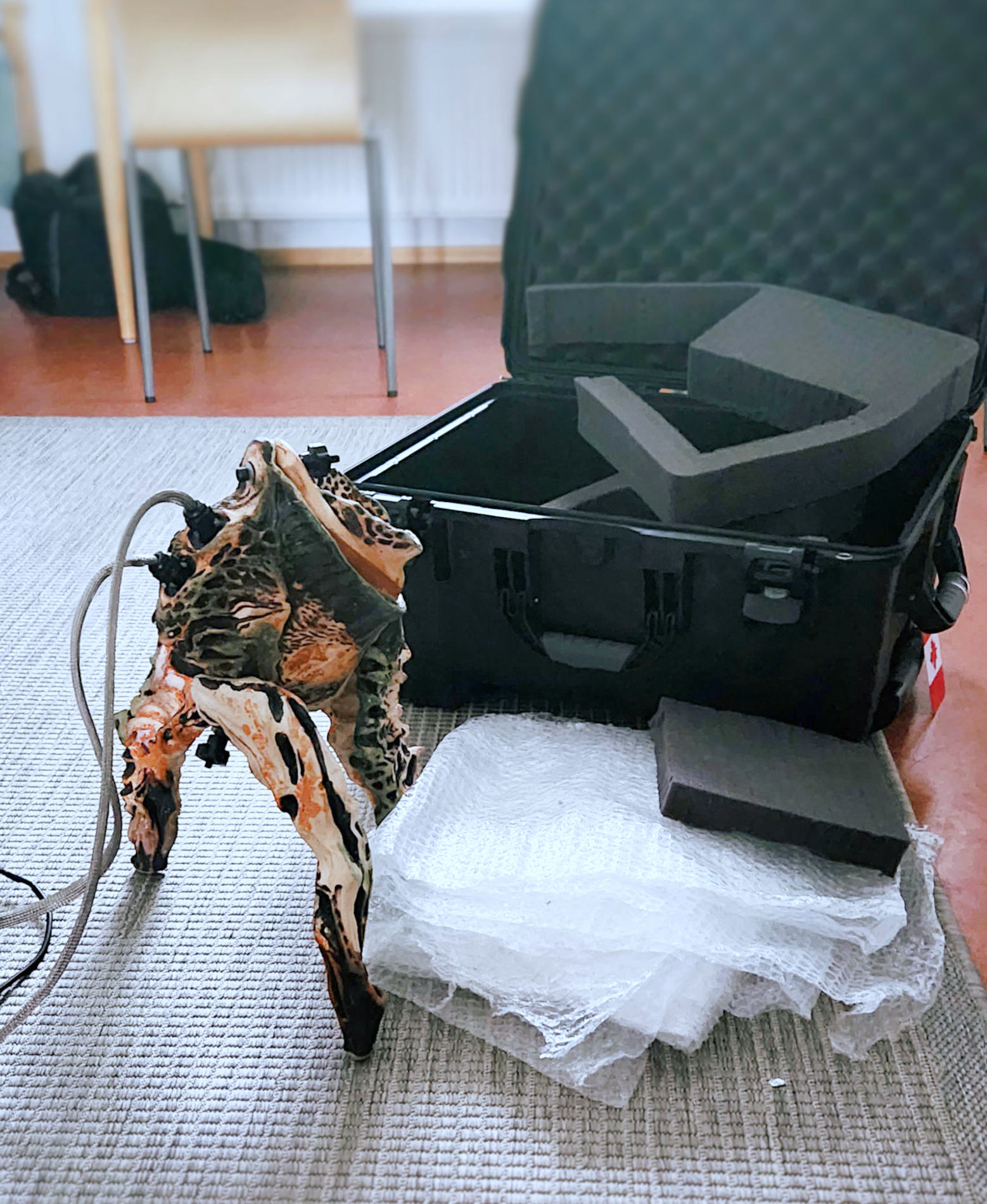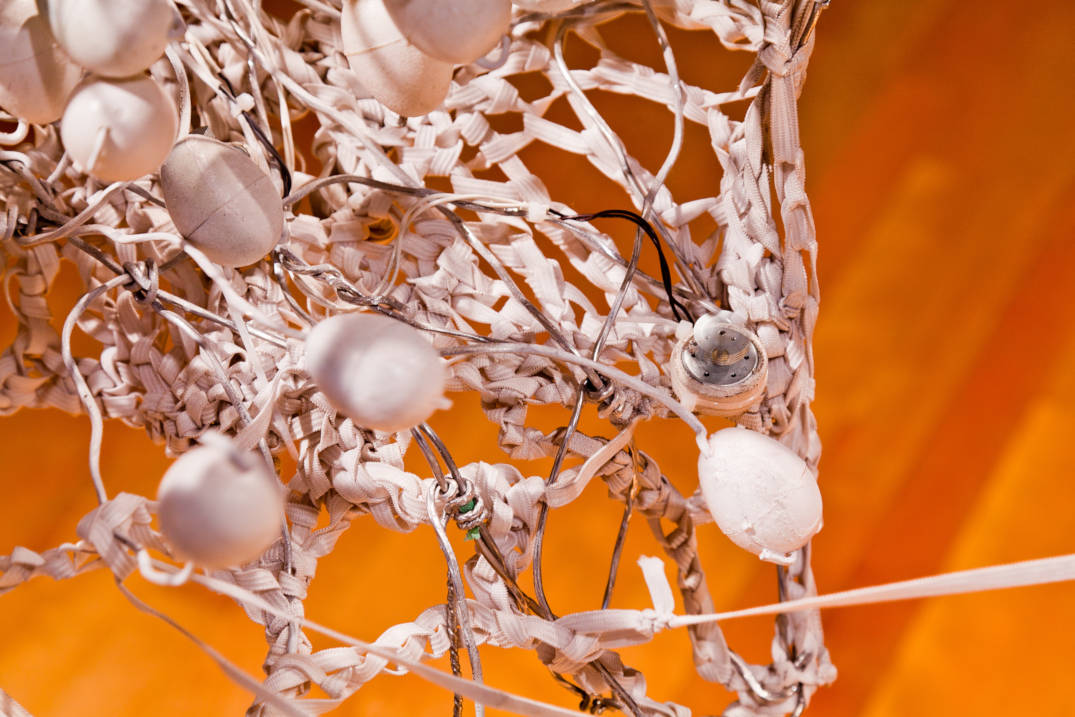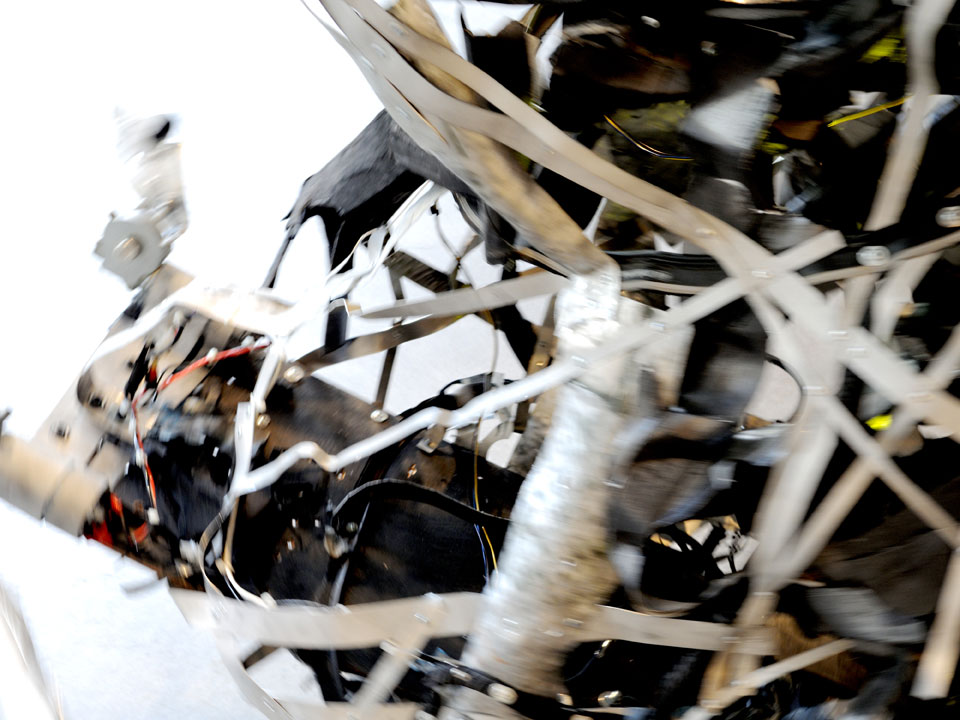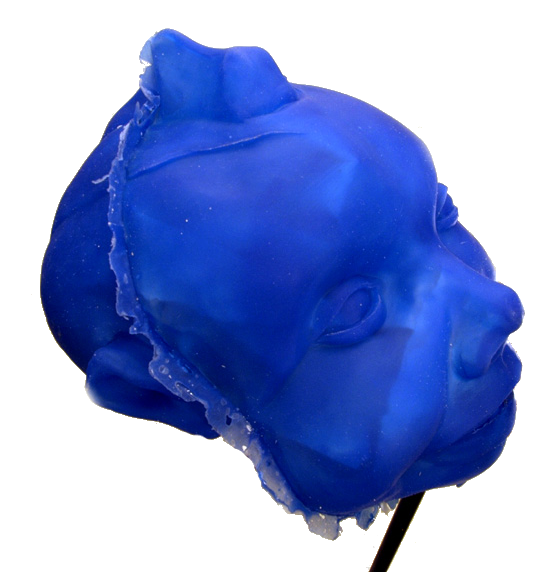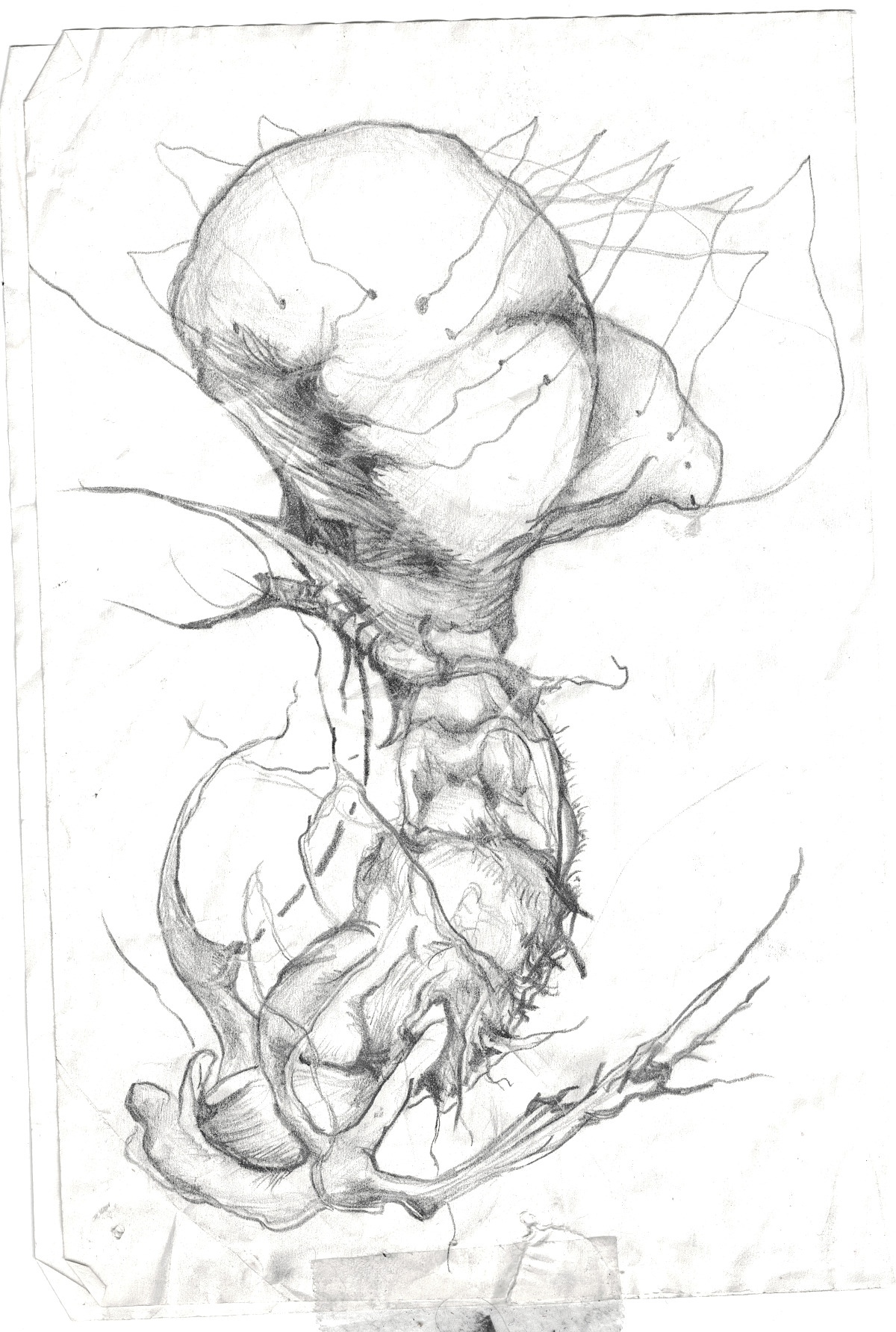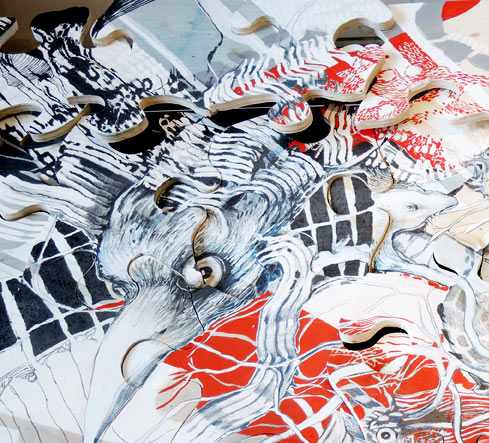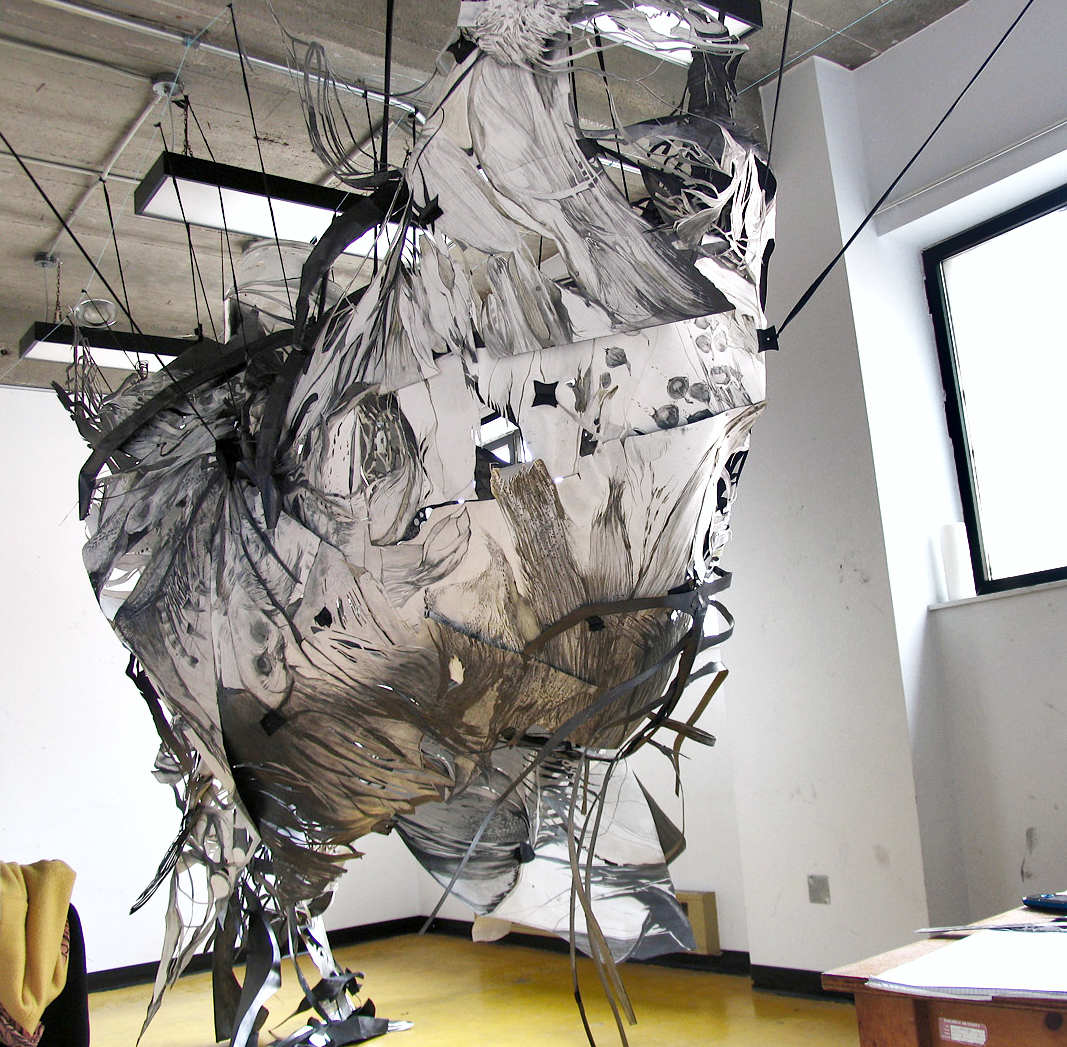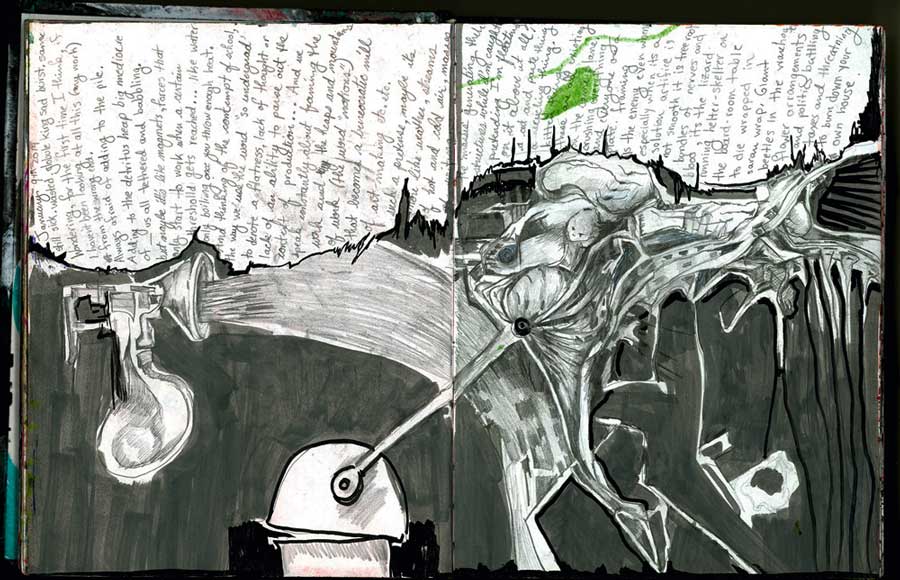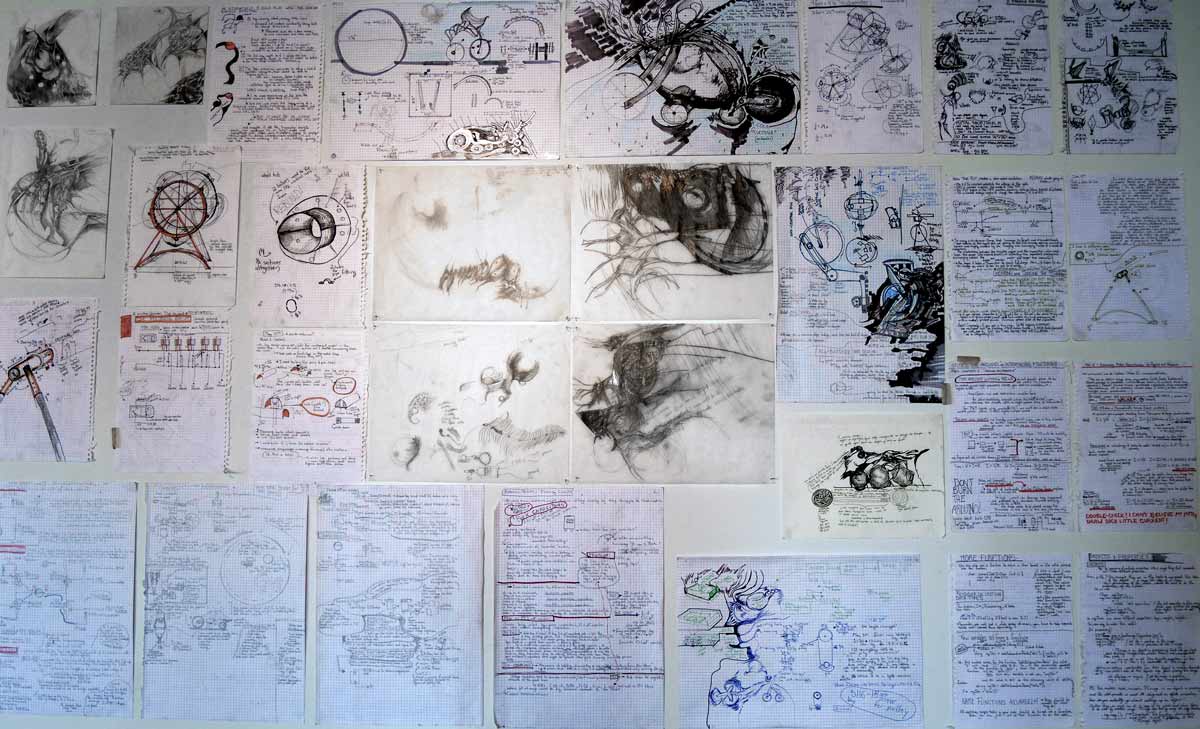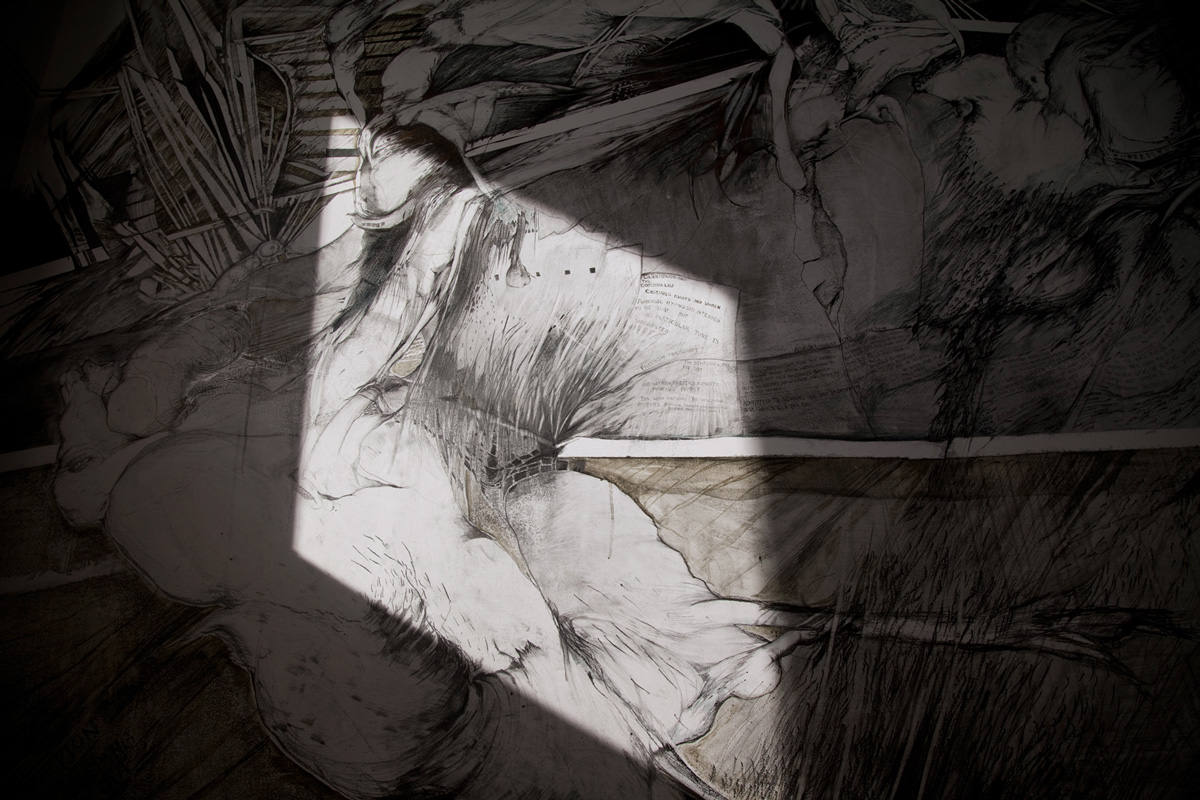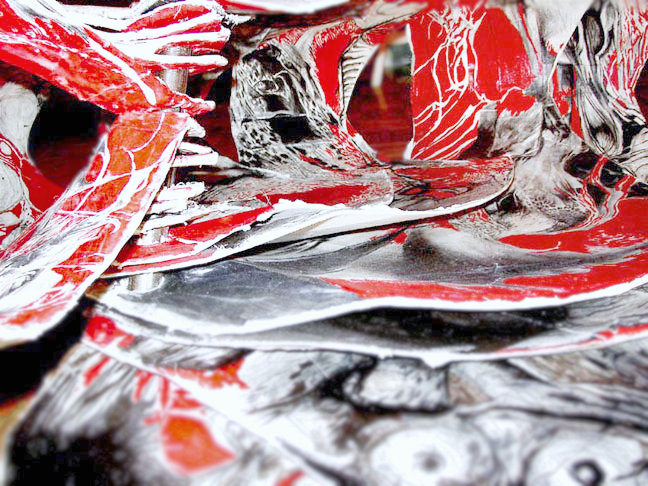Beatriz Herrera Projects
Ceramics 2021-present

2021 I began a collaboration around the subject of bipolar mosses and gardening as a critical practice with the critical gardening collective. I hadn’t worked with clay, participated in a wood firing, or even fired an electric kiln in twenty years. Still, I began sketching plans for large-scale outdoor ceramic pieces that could survive Québec’s winters and gleefuly wrote:
I will focus on mixing a clay that can withstand freeze and thaw cycles, not just as a construction material but also as a growth substrate and water filtration medium. I will experiment with the use of pedal-powered rope pumps as well as more conventional electric pumps to draw water through channels embedded in the clay prototypes. Moisture levels will be monitored using simple feedback between humidity sensors and the pumps….all necessary to encourage a moss ecosystem to establish.
I didn’t realize what a rabbit hole I was about to plunge into!
Researching that project brought me to, not just of bryology (study of mosses,) but also the life-cycles of the electronics and equipment we were using in order to try to get closer to their worlds. I wanted to understand how did mass-production, mass-consumption, trash and labour form an artifactual ecosystem that dictated the survival of living ecosystems?
As the project draws to a close, I’m trying not to lose the sense of how our artifactual ecosystems, all the built-up material and digital relations- align with living ones – or fail to. And ceramics is on the boundaries of so many wildly different registers of reality that it’s a perfect vantage point… from historical artifacts to mass production to contemporary craft: it’s a Mayan pot traced with the hieroglyphic in-jokes of minor demons mocking absent gods. But… it’s also zirconia hip joints, mugs with grinning grandchildren and toilets. And… in contemporary production it’s also trying to understand the relationships between labour, mines and shipping.
But…three years later and I’m only beginning to wrap my head around the materiality of clays.
Clay insists on collaboration… first with gravity and then, (possibly) with chemical processes, (if one wants to get past the room-temperature mud stage). It’s beautiful to begin to intuit the commonality between the signalling processes in electronics, plant nutrient uptake and clays – all based on electrical charges. It’s beautiful to understand how the feldspars and clays are represented in the periodic table of the elements, and how I can use that as a tool to balance the act of playing with sticky dirt in the studio,(aka. Al2O3·2SiO2·2H2O).
Intention needs to insinuate itself into processes driven by time, heat, humidity– into gravity and rock flows. In that sense it is the perfect guide to working with living systems.
The last few years have been taken up with hundreds of failed experiments…and a handful of successful ones,
Because what ceramics is not: immaterial, or virtual, or instantaneous.
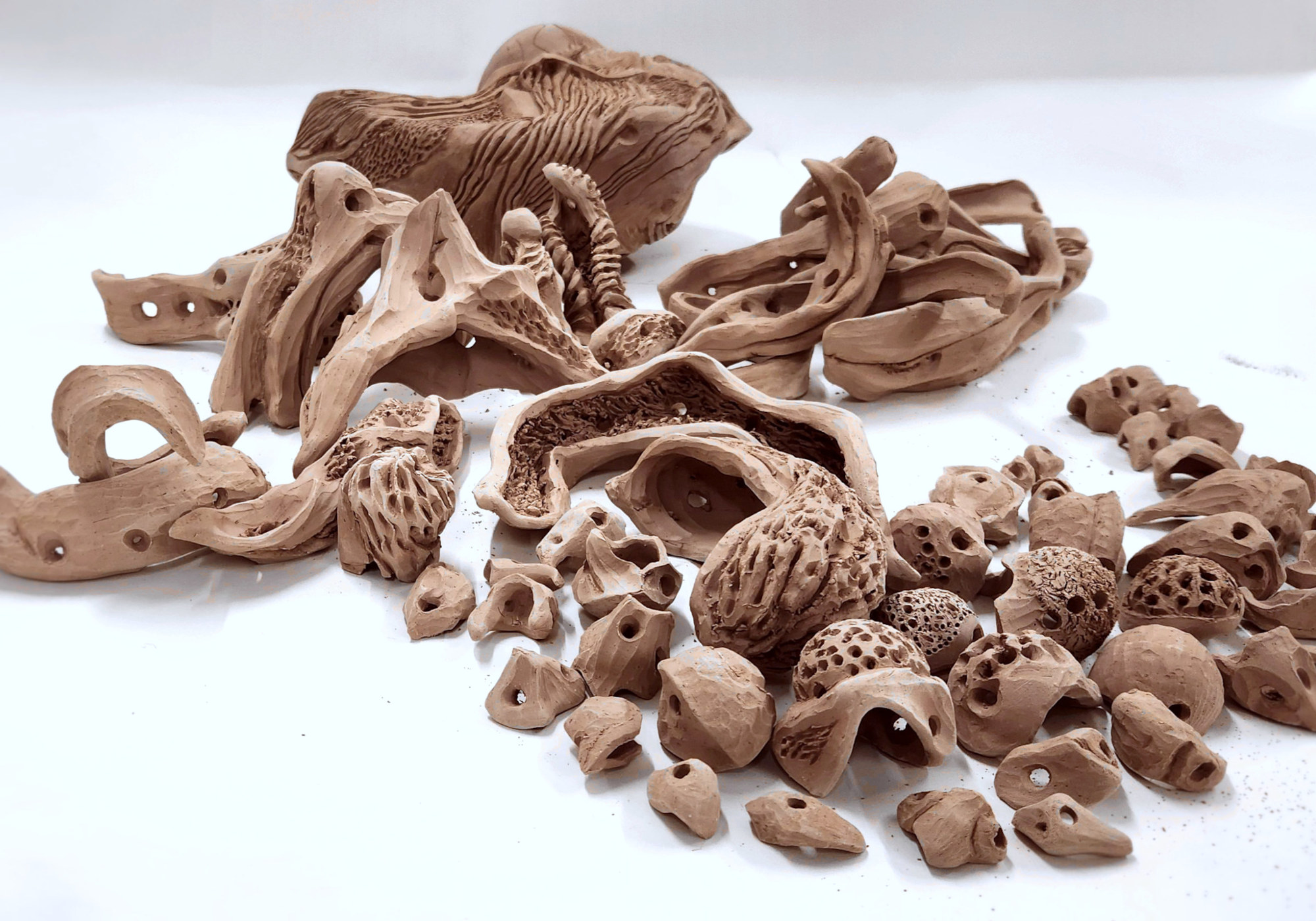

Betula Stack
(in progress)
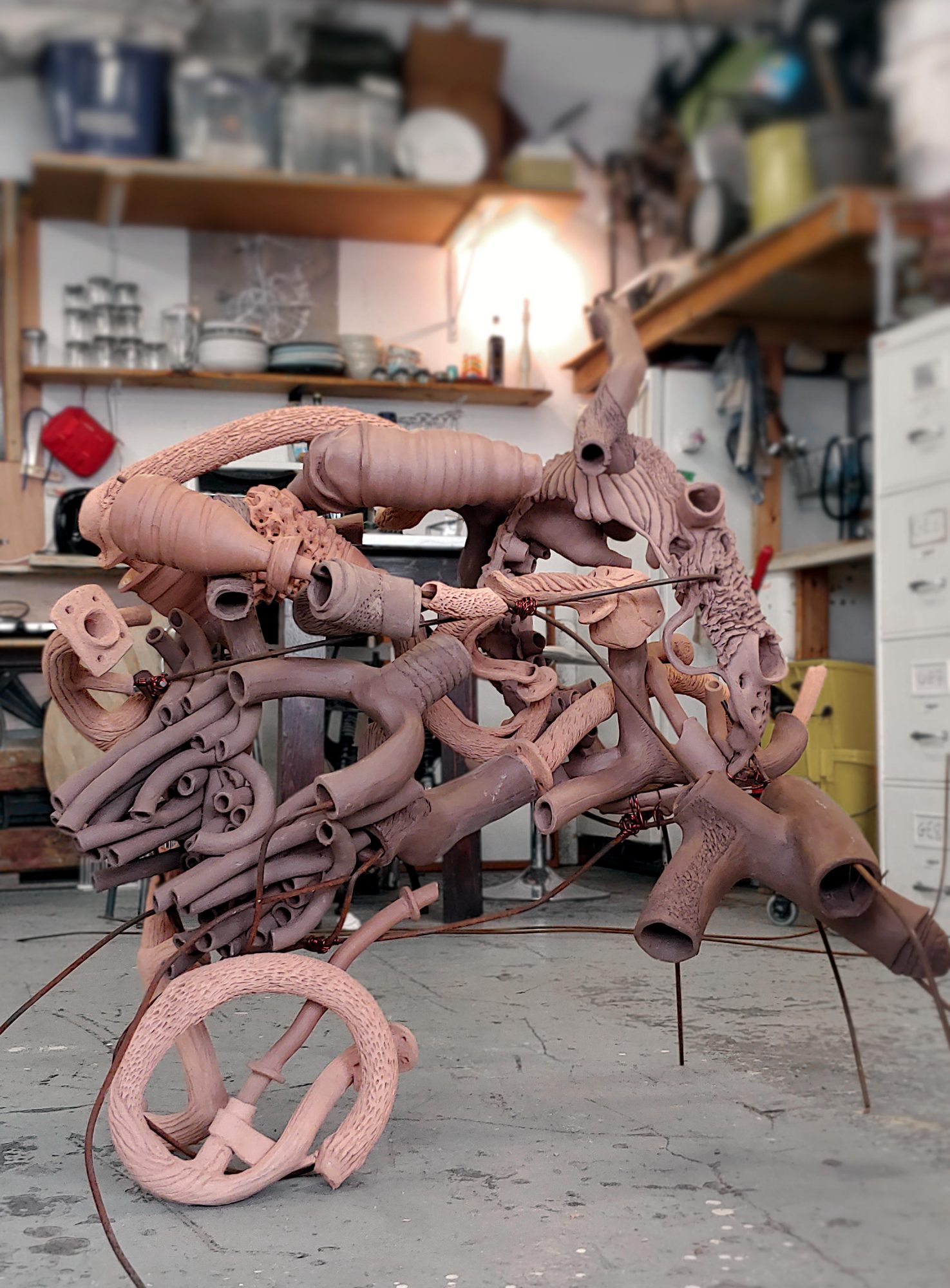
tests and processes
…still under construction
